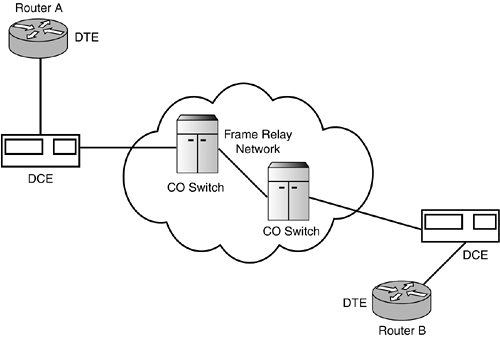WAN Services
| Because WANs cover long distances, organizations typically subscribe to an outside provider for WAN services. These services (usually telephone and data) are routed from an interface at one end of the customer's network through the provider's network to the other end of the customer's network. It is the provider's responsibility to provide the customer with the parameters necessary to connect to its network. The WAN provider's network appears as a cloud to the customer, who simply makes a point-to-point connection to the remote site. The main interface between the customer and provider networks occurs between the data terminal equipment ( DTE ) and the data communications equipment ( DCE ) .
The customer's router usually serves as the DTE device and performs the packet-switching function. Sometimes, DTE devices are bridges or terminals. The DCE attaches to the DTE and provides clocking, converts the data into a suitable format, and switches the data across the provider's network. DCE devices include modems, a channel service unit/data service unit (CSU/DSU), and a terminal adapter/network termination 1 (TA/NT1). The DTE/DCE interface serves as the boundary where responsibility for the network traffic shifts from the customer's network to the WAN provider's network. It can support several common types of WAN service connections when the DTE is a Cisco router. The first type involves switched services . Switches within the provider's network transmit data from one customer DTE to that customer's other DTEs. Frame Relay and ISDN are examples of packet-switched and circuit-switched services, respectively. The second type involves connecting remote devices to a central mainframe. Synchronous Data Link Control (SDLC) is the protocol used in these types of point-to-point or point-to-multipoint connections. SDLC is a bit-synchronous data link protocol that supports legacy IBM networks. A third type involves connecting peer devices. HDLC and PPP can be used to encapsulate the data for transmission to peer DTE devices. Figure 4.2. Placement of DTE and DCE in a wide area network. Figure 4.3. Common WAN services supported by Cisco equipment.
|
EAN: N/A
Pages: 155


